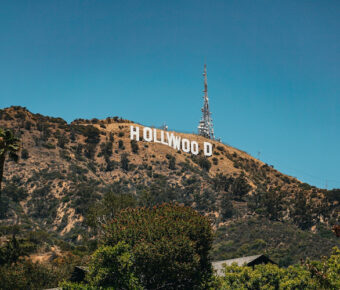
New York Trip Cost: Budget-Friendly Weekend Under $500
Planning a trip to New York City? Get ready for an unforgettable adventure in the Big Apple! From iconic landmarks to world-class cuisine, NYC offers endless excitement. But let’s talk about what’s on everyone’s mind – the cost. Budget travelers typically spend between $135 and $220 per day on a trip to New York City, while luxury seekers might spend upwards of $1,000 daily. Don’t worry though, there are ways to enjoy the city without breaking the bank.
New York’s energy is unlike anywhere else. You’ll find yourself surrounded by towering skyscrapers, diverse neighborhoods, and buzzing streets. Whether you’re craving a slice of pizza from a street corner or dreaming of a Broadway show, NYC has something for every budget. Let’s break down the costs so you can plan your perfect Big Apple getaway.
Contents
- Key Takeaways
- Planning Your New York Trip Budget
- Estimated Daily Costs for Visitors
- Best Times to Visit for Lower Prices
- Average Flight Cost Considerations
- Accommodation Options
- Comparing Hotels and Hostels
- Average Prices for Accommodations
- Luxury vs Budget Stays
- Eating Out: Meals and Dining Costs
- Budgeting for Meals
- Affordable Dining Options
- Transportation Within the City
- Public Transit vs Taxis
- Understanding Subway Costs
- Local Transportation Savings Tips
- Sightseeing and Attractions
- Major Landmarks and Their Fees
- Using the New York Pass
- Free Attractions in the City
- Shopping and Miscellaneous Expenses
- Estimating Shopping Budgets
- Souvenirs and Specialty Items
- Entertainment and Nightlife
- Broadway Shows and Ticket Prices
- Live Music and Events
- Practical Tips for a 7-Day Trip
- Mapping Out a Weekly Itinerary
- Applying NYC Travel Tips for Savings
- More Travel Guides
Key Takeaways
- Daily costs range from $135 for budget travelers to over $1,000 for luxury experiences
- Accommodation and food make up the biggest chunk of your NYC budget
- Using public transport and seeking out free attractions can help cut costs significantly
Planning Your New York Trip Budget
Figuring out costs for a New York trip can be tricky. Let’s break down what you’ll likely spend each day, when to visit for deals, and how much flights might set you back.
Estimated Daily Costs for Visitors
You’ll want to budget about $135-$220 per day for a budget trip to NYC. This covers the basics:
- Hostel bed or budget hotel: $50-$100
- Meals: $30-$50 (mix of cheap eats and cooking)
- Metro rides: $10-$15
- One attraction: $25-$35
For a mid-range experience, plan on $220-$350 daily:
- Nice hotel room: $150-$250
- Meals out: $50-$80
- Transport and attractions: $20-$50
Luxury travelers, get ready to spend $350+ per day. Five-star hotels start around $300 nightly, and fancy dinners can easily hit $100+ per person.
Remember, these are just averages. Your actual costs depend on your travel style and what you do each day.
Best Times to Visit for Lower Prices
Want to save some cash? Try visiting in January or February. It’s chilly, but you’ll find great hotel deals and shorter lines at attractions.
Another good time is right after Thanksgiving until mid-December. The city’s decked out for the holidays, but prices haven’t spiked yet for peak season.
Avoid major holidays and events like:
- New Year’s Eve
- Thanksgiving week
- Christmas to New Year’s
- Fashion Week (February and September)
During these times, hotel rates can double or triple. If you must visit then, book way ahead for better deals.
Average Flight Cost Considerations
Flight prices to NYC vary a ton based on where you’re coming from and when you book. From within the U.S., you might snag a deal for $200-$300 round-trip if you’re flexible and book early.
International flights cost more, of course. From Europe, expect to pay $500-$1000+ round-trip. Asian or Australian travelers might see prices from $800-$1500+.
To get the best deals:
- Book 2-3 months ahead for domestic flights
- Look 3-6 months out for international trips
- Use flexible date searches on KAYAK to find cheaper days
- Try flying midweek instead of weekends
Don’t forget to factor in transport from the airport. A taxi to Manhattan costs $50-$70, while the AirTrain + subway is about $10.
Accommodation Options

New York City offers a wide range of places to stay for every budget and taste. From swanky hotels to cozy hostels, you’ll find options to suit your needs and wallet.
Comparing Hotels and Hostels
Hotels in NYC give you more privacy and comfort, but they cost more. A typical hotel room might set you back $200-$400 per night. You get your own bathroom, daily cleaning, and sometimes extras like a gym or pool.
Hostels are way cheaper, often $50-$100 a night for a bed in a shared room. You’ll meet other travelers and save cash, but you’ll have less space and privacy. Many hostels have common areas to hang out and kitchens to cook your own food.
Some hostels offer private rooms too. These cost more than dorms but less than hotels. It’s a good middle ground if you want privacy on a budget.
Average Prices for Accommodations
Booking.com shows NYC hotel prices range from about $150 to $500+ per night. The exact price depends on the area, time of year, and how fancy the place is.
Midrange hotels usually cost $200-$300 a night. Budget hotels might be $150-$200. Luxury spots can easily top $500.
Hostels are much cheaper. Expect to pay $40-$80 for a dorm bed. Private rooms in hostels cost about $100-$200.
Vacation rentals like apartments can be a good deal for groups or longer stays. Prices vary a lot, but you might find a whole apartment for $150-$300 per night.
Luxury vs Budget Stays
Luxury hotels in NYC are amazing but pricey. You’re looking at $500+ per night for top-end places. You get fancy rooms, great service, and cool extras like spas or rooftop bars.
Budget options are way cheaper but more basic. Hostels or budget hotels might cost $50-$150 a night. You give up some comforts but save lots of cash.
Mid-range spots offer a mix of comfort and value. Think $200-$400 per night. You get a nice room and some perks without breaking the bank.
Remember, prices change based on when you visit. Summer and holidays cost more. Winter (except Christmas) is often cheaper. Book early for the best deals, especially in busy times.
Eating Out: Meals and Dining Costs

Eating in New York City can be pricey, but there are ways to enjoy great food without breaking the bank. You’ll find options ranging from cheap street eats to fancy restaurants.
Budgeting for Meals
Plan to spend about $50-$80 per day on food in NYC. Breakfast might cost $10-$15 at a diner or cafe. Lunch could be $15-$25 at a casual spot. Dinner prices vary a lot – you might pay $25-$40 at a mid-range place.
Fancy restaurants can easily cost $100+ per person. Don’t forget to factor in tips – 15-20% is standard. Drinks add up fast too. A cocktail might be $15-$20, while beer runs $8-$12.
To save money, try to eat your big meal at lunch when prices are often lower. Look for happy hour deals on food and drinks. And don’t be afraid to grab a slice of pizza or a hot dog from a street vendor now and then.
Affordable Dining Options
You don’t have to spend a fortune to eat well in NYC. Food trucks and carts offer tasty, cheap eats like tacos, falafel, or halal platters for $5-$10.
Pizza slices cost about $3-$5. Chinatown has lots of budget-friendly spots – try dumplings or noodle soups for under $10. Many neighborhoods have great delis with sandwiches for $8-$12.
For sit-down meals, look for small ethnic restaurants. You can often get huge portions of Italian, Chinese, or Indian food for $15-$20. Some diners offer all-day breakfast deals.
Don’t miss the chance to try some classic NYC foods on a budget. Grab a bagel with cream cheese for breakfast ($3-$5) or a pastrami sandwich from a classic deli ($15-$20).
Transportation Within the City

Getting around New York City can be both exciting and overwhelming. The city offers a variety of options to suit different budgets and preferences.
Public Transit vs Taxis
Subways and buses are the most cost-effective way to travel in NYC. A single ride costs $2.90 and lets you go anywhere in the city. Taxis are pricier but can be more convenient for short trips or when you’re in a hurry.
If you’re traveling with a group or have lots of luggage, renting a car might make sense. But keep in mind that parking can be tough and expensive in the city.
For a fun ride, try the NYC Ferry. It costs $4 per trip and gives you great views of the skyline.
Understanding Subway Costs
The subway is your best bet for getting around cheaply. A single ride is $2.90, no matter how far you go. You can buy a MetroCard or use OMNY to tap and pay with your credit card or phone.
If you plan to use the subway a lot, consider these options:
- 7-day unlimited pass: $34
- 30-day unlimited pass: $127
These passes can save you money if you’re taking more than 12 trips a week.
Remember, express buses cost more at $7 per ride. But they can be a good choice for longer trips to outer boroughs.
Local Transportation Savings Tips
To save money on transportation in NYC, try these tricks:
- Walk when possible. Many attractions are closer than you think.
- Use CityTicket for $5 off-peak ($7 peak) rides on LIRR or Metro-North within NYC.
- Buy a weekly unlimited MetroCard if you’re staying for 4+ days.
- Take advantage of free transfers between subways and buses.
Avoid taxis during rush hour when traffic is bad. They can get expensive fast when you’re stuck in a jam.
Bike rentals can be a fun and cheap way to explore parks and quieter areas. Many hotels offer free bikes to guests.
Sightseeing and Attractions
New York City is packed with iconic sights and world-class attractions. You’ll find a mix of famous landmarks, renowned museums, and free activities to explore.
Major Landmarks and Their Fees

The Statue of Liberty is a must-see, costing $24.50 for a ferry ticket that includes Ellis Island access. For sweeping city views, head to the Empire State Building. Tickets start at $42 for the main deck.
The 9/11 Memorial is free to visit, but the museum costs $29 for adults. At the Metropolitan Museum of Art, you’ll pay $25 for adults, while the Museum of Modern Art charges $25 too.
Don’t miss Central Park – it’s free to wander its 843 acres. The Brooklyn Bridge is another free attraction with great photo ops.
Using the New York Pass
A New York Pass can save you money if you plan to visit lots of attractions. It gives you access to over 100 sites for a flat fee. Prices vary based on how many days you buy, starting around $129 for one day.
With the pass, you can skip ticket lines at many places. It covers top spots like the Empire State Building and the Guggenheim Museum. You also get a hop-on-hop-off bus tour included.
Do the math to see if it’s worth it for your trip. If you’ll hit 3+ pricey attractions daily, it can be a good deal.
Free Attractions in the City

NYC offers tons of free sights too. You can experience Times Square at no cost, just prepare for crowds! The dazzling lights are best at night.
Walk the High Line, an elevated park on old train tracks. It’s a unique way to see the city. Bryant Park also hosts free movies, yoga classes, and other events, especially in summer.
Many museums have free or pay-what-you-wish hours. The Guggenheim is pay-what-you-wish on Saturday evenings. Some, like the American Folk Art Museum, are always free.
Take a free tour of Grand Central Terminal to learn its secrets. Or hop on the Staten Island Ferry for skyline views at no cost.
Shopping and Miscellaneous Expenses

New York City offers endless shopping opportunities, but it’s easy to overspend if you’re not careful. Let’s look at some ways to plan your shopping budget and find unique NYC souvenirs without breaking the bank.
Estimating Shopping Budgets
Setting a shopping budget for NYC can be tricky. A good rule of thumb is to allocate $50-$100 per day for shopping and extras. This gives you room for a few nice purchases without going overboard.
Remember, sales tax in NYC is 8.875% on most items over $110. That can add up fast! Try to stick to your budget by making a list of must-have items before you go.
Window shopping is free and fun in NYC. Check out famous spots like Fifth Avenue or SoHo even if you don’t plan to buy. You might find great deals at outlet malls just outside the city too.
Souvenirs and Specialty Items
NYC has tons of cool souvenirs that won’t empty your wallet. Skip the tourist traps and try these ideas:
- I ♥ NY t-shirts: $10-$15 at street vendors
- Magnets or keychains: $5-$10
- Local food items: $5-$20 (think bagels, cheesecake, or pizza sauce)
For unique gifts, try spots like Chelsea Market or Artists & Fleas in Brooklyn. You’ll find handmade jewelry, art prints, and quirky NYC-themed items for $20-$50.
Splurging on a special NYC item? Consider saving up for:
- A designer handbag from a flagship store: $200-$500+
- Broadway show memorabilia: $30-$100
- High-end NYC food gifts: $50-$200
Just keep an eye on your total spend. Those little purchases can add up fast in the Big Apple!
Entertainment and Nightlife

New York City buzzes with energy after dark. From glitzy Broadway shows to intimate music venues, you’ll find endless ways to fill your evenings. Let’s break down some costs for the city’s top nighttime attractions.
Broadway Shows and Ticket Prices
Seeing a Broadway show is a must-do NYC experience. Ticket prices vary widely depending on the show and seats. For popular musicals like “Hamilton” or “The Lion King,” expect to pay $100-$200 per ticket. But you can snag cheaper seats if you’re flexible.
Try the TKTS booth in Times Square for same-day discounts of up to 50% off. Or enter digital lotteries for a chance at $40 tickets to hit shows. Some theaters offer standing room tickets for under $50.
Mid-week performances are often cheaper than weekend shows. And if you’re really pinching pennies, off-Broadway productions can be just as good at half the price.
Live Music and Events
NYC’s live music scene caters to all tastes and budgets. Catch up-and-coming bands at iconic clubs like Mercury Lounge or Bowery Ballroom for $20-$30. Big name acts at Madison Square Garden can set you back $100+.
For free tunes, check out summer concert series in parks across the city. Central Park’s SummerStage hosts free shows all season long.
Comedy clubs are another NYC staple. The Comedy Cellar charges a $15-$25 cover, plus a two-drink minimum. Or try your luck at getting standby tickets for TV show tapings like SNL.
Practical Tips for a 7-Day Trip

Planning a week in NYC takes some savvy to make the most of your time and money. Here’s how to get the best bang for your buck without missing out on the Big Apple’s top attractions.
Mapping Out a Weekly Itinerary
Start by grouping sights by area. Hit Central Park and the Met on the same day to save travel time. Grab a 7-day unlimited MetroCard for $34 – it’ll pay off quick with all your zipping around. Don’t try to cram too much in each day. Pick 2-3 main attractions and leave room for spontaneous finds.
Mix free activities with paid ones. The High Line and Brooklyn Bridge are must-sees that won’t cost a dime. Save money by visiting the Statue of Liberty from the free Staten Island Ferry instead of pricey tours.
Consider a New York Explorer Pass if you plan to hit lots of big attractions. It can save you cash on entry fees if you use it wisely.
Applying NYC Travel Tips for Savings
Eating out for every meal adds up fast in NYC. Hit local delis and food carts for cheap eats. Pack picnic supplies from grocery stores for lunch in the park.
Skip taxis when you can. The subway is faster and way cheaper during rush hour. When you do need a ride, try apps like Via for flat-rate shared rides.
Look for free museum days or pay-what-you-wish hours. Many top spots like the Met have suggested admission fees you can ignore if you’re on a tight budget.
Stay in an outer borough like Brooklyn or Queens to slash your hotel costs. You’ll get more space and a local vibe for less. Just make sure you’re near a subway stop for easy Manhattan access.



